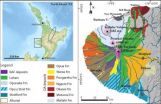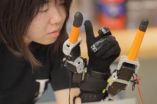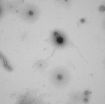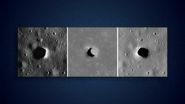(Press-News.org) Boulder, Colo., USA – Volcanic hazards aren't limited to eruptions. Debris avalanche landslides can also cause a great deal of damage and loss of life. Stratovolcanoes, with their steep, conical shapes made up of lava and unconsolidated mixed materials, can reach a critical point of instability when they overgrow their flanks. This leads to partial collapse, and the product of this slope failure is a large-scale, rapid mass movement known as a catastrophic landslide or debris avalanche.
In a matter of minutes, a debris avalanche can drastically modify the shape and nature of the surrounding landscape, covering extensive areas (in this case, up to 27 kilometers away) and changing the normal water drainage system of the region.
About 25 thousand years ago, the biggest slope failure event known at Taranaki volcano, New Zealand, resulted in the Pungarehu debris avalanche deposit (DAD). Initial collapse of the proto-Taranaki volcano occurred near the Last Glacial Maximum, with snow and ice cover and substantial groundwater present. The collapsing, sliding, large blocks of edifice material, known as "megaclasts," were highly fractured by the landslide generation and the depressurization event, forming pervasive jigsaw textures.
This study by scientists from Brazil, Mexico, and New Zealand provides a textural analysis of the unique features of this landslide. The authors examine grain sizes, sedimentary structures, and microscopic particle attributes and provide new insights into debris avalanche transport and internal evolution processes.
Their findings help to explain the formation of the highly irregular topography of debris avalanche deposits, with chaotically distributed (and probably temporary) zones of shear developing where softer lithologies occur in a collapsing mass, thus leading to differential velocity profiles of portions of the flowing mass in vertical and horizontal planes.
The authors write that their goal is not only to provide new insight concerning the transport and emplacement mechanisms of Pungarehu DAD, but to also improve understanding giant debris avalanche deposits worldwide.
FEATURED ARTICLE
Textural features as indicators of the transport and emplacement of the >7 km3 Pungarehu debris avalanche deposit, Taranaki volcano, New Zealand
M. Roverato et al., Instituto de Geociências IGC GSA, Universidade de São Paulo, 05508080, São Paulo, SP, Brasil. Published online 30 June
2014; http://dx.doi.org/10.1130/B30946.1.
Other GSA BULLETIN articles (see below) cover such topics as
1. Helping to meet the land-management challenge of rapidly eroding gullies and arroyos caused by flash-flooding;
2. One of the largest exposures of mantle rocks on Earth: The Betico-Rifean belt, southern Spain and northern Morocco;
3. New mapping of the McDoogle pluton in the U.S. Sierra Nevada; and
4. The formation and evolution of the Piling Group on Baffin Island, Canada.
GSA BULLETIN articles published ahead of print are online at http://gsabulletin.gsapubs.org/content/early/recent; abstracts are open-access at http://gsabulletin.gsapubs.org/. Representatives of the media may obtain complimentary copies of articles by contacting Kea Giles. Please discuss articles of interest with the authors before publishing stories on their work, and please make reference to GSA BULLETIN in your articles or blog posts. Contact Kea Giles for additional information or assistance.
Sign up for pre-issue publication e-alerts at http://www.gsapubs.org/cgi/alerts for first access to new journal content as it is posted. Subscribe to RSS feeds at http://gsabulletin.gsapubs.org/rss/.
Non-media requests for articles may be directed to GSA Sales and Service, gsaservice@geosociety.org.
Arroyo channel head evolution in a flash-flood–dominated discontinuous ephemeral stream system
Stephen B. DeLong et al., U.S. Geological Survey, 345 Middlefield Road, Menlo Park, California 94025, USA. Published online 16 July 2014; http://dx.doi.org/10.1130/B31064.1.
Land managers in drylands across the world are challenged by rapidly eroding gullies and arroyos. Abrupt transitions from flat ground that conveys flood water as slow, wide, shallow flows to deeply eroding channels that convey water rapidly through the landscape have profound negative effects on rangeland quality. Surprisingly little is known about how the heads of arroyo channels erode and why their shapes mimic larger theater-shaped bedrock channel heads on Earth and other planets. Stephen B. DeLong and colleagues, by deploying a wide range of sensor technology, have illuminated the importance of surface floods both deep and shallow in causing erosion and expansion of these gully systems and conclude that water moving through the shallow subsurface and seeping out at steep channel heads, long thought to be a primary cause of theater-shaped channel heads, does not appear to be a necessary, or even common occurrence, in the studied landscape.
Crustal attenuation as a tracer for the emplacement of the Beni Bousera ultramafic massif (Betico-Rifean belt)
A.M. Álvarez-Valero et al., Dept. of Earth, Atmospheric and Planetary Sciences, Massachusetts Institute of Technology, Cambridge Massachusetts, USA. Published online 30 June 2014; http://dx.doi.org/10.1130/B31040.1.
Earth's mantle, at high depths, is strikingly exposed in rare places on Earth's surface. This special situation requires the combination of different mechanisms in nature that allow such emplacement. The high temperature contact between the mantle rocks and those accompanists from the deep crust during their ascent, describe a particular picture in Earth's surface that needs an interdisciplinary study in detail of rocks and structures. Thereby, this paper focuses in the information given by the crustal rocks (partly melted at high temperatures), which are in turn coupled to the mantle rocks information, to constrain the emplacement process in one of the largest exposures of mantle rocks on Earth the Betico-Rifean belt (southern Spain and northern Morocco).
Multi-stage emplacement of the McDoogle pluton, an early phase of the John Muir intrusive suite, Sierra Nevada, CA, by magmatic crack-seal
M.A. Stearns and J.M. Bartley, Dept. of Geology and Geophysics, University of Utah, Salt Lake City, Utah 84112, USA. Published online 30 June 2014; http://dx.doi.org/10.1130/B31062.1.
New mapping of the McDoogle pluton in the Sierra Nevada has resolved important details of its detailed intrusion history. The 95-million-year-old pluton is tabular and concordant to the steeply dipping surrounding rocks. It was previously divided into three phases (a central phase and two adjacent border phases) based on anatomy and rock type. The earliest central phase is made up of steep dikes separated by abundant inclusions of the wall rock. These screens are largely absent from border phases located on either side of the central phase. The inferred relative ages of intrusive phases and the wall-rock screen distribution mark a change from addition of new material at the margins (central phase) to addition at the center of each growing phase (border phases). Interaction between the effects of preexisting deformation, older non-deformed intrusions, and annealing likely caused the transition in growth mechanism. The trend from margin based to central based growth during emplacement has been observed in other intrusions and intrusive suites, and may be a general pattern of incremental intrusion associated with the feedback between preexisting deformation and thermal addition in magmatic arcs.
Did a proto-ocean basin form along the southeastern Rae cratonic margin? Evidence from U-Pb geochronology, geochemistry (Sm-Nd and whole-rock), and stratigraphy of the Paleoproterozoic Piling Group, northern Canada
N. Wodicka et al., Geological Survey of Canada, 601 Booth Street, Ottawa, Ontario K1A 0E8, Canada. Published online 16 July 2014; http://dx.doi.org/10.1130/B31028.1.
Approximately two billion years ago, an extensive sedimentary basin formed along the southern margin of the ancient Rae craton in northern Canada. This study uses field observations and analytical tools to elucidate the formation and evolution of the northeastern-most portion of this sedimentary basin, the Piling Group on Baffin Island, with the aim of deciphering the geological evolution of the underlying crust. The Piling Group contains deep marine turbidite deposits not observed in time-equivalent, intracratonic basin units further southwest. The work suggests that a proto-ocean basin formed off the southeastern coast of the Rae craton at about 1.92 billion years ago allowing for the deposition of 3-5 km thick turbidite deposits. Subsequent mantle upwelling may have triggered melting of highly thinned continental crust. The results are consistent with the much debated model of asthenospheric upwelling and incipient rifting along the Rae-Hearne boundary (Snowbird Tectonic Zone) farther southwest.
Calibration of a conodont apatite-based Ordovician 87Sr/86Sr curve to biostratigraphy and geochronology: Implications for stratigraphic resolution
M.R. Saltzman et al., School of Earth Sciences, Ohio State University, Columbus, Ohio 43210, USA. Published online 30 June 2014; http://dx.doi.org/10.1130/B31038.1.
The strontium isotopic composition of the world's oceans changes through time in response to weathering of rocks on the continents. One of the most prominent changes occurred in the Ordovician period between about 465 and 455 million years ago. This drop in Sr isotopes in the Ordovician can also be used to tell time because the element Sr is globally well mixed in the world's oceans.
Xigaze Forearc Basin revisited (South Tibet): provenance changes and origin of the Xigaze Ophiolite
W. An et al., State Key Laboratory of Mineral Deposits Research, School of Earth Sciences and Engineering, Nanjing University, Nanjing, 210029, China. Published online 30 June 2014; http://dx.doi.org/10.1130/B31020.1.
Studies on forearc-basin (a forearc is the region between an oceanic trench and the associated volcanic arc at Pacific-type convergent margins) are greatly helpful for understanding and reconstructing the evolution of the entire subduction system. This study investigated the Xigaze forearc basin, forming in the late Early Cretaceous (110 to 75 Ma [million years ago]) during the subduction of Neo-Tethyn Ocean in south Tibet. The geochemical and stratigraphic signatures indicate that the Xigaze Ophiolite formed by forearc spreading and represents the basement of the forearc sedimentary sequence. Volcaniclastic sedimentation began with thick turbiditic sandstones and interbedded shales followed by shelfal, deltaic, and fluvial strata. Studies of U-Pb-Hf isotopes of detrital zircons revealed that three petrofacies with distinct provenance document the progressive erosional evolution of the Gangdese arc with uplift of the central Lhasa during the Late Cretaceous.
Two-phase subduction and subsequent collision defines the Paleotethyan tectonics of the southeastern Tibetan Plateau: Evidence from zircon U-Pb dating, geochemistry, and structural geology of the Sanjiang orogenic belt, southwest China
T.N. Yang et al., Institute of Geology, Chinese Academy of Geological Sciences, Beijing 100037, China. Published online 16 July 2014; http://dx.doi.org/10.1130/B30921.1.
The Tibetan Plateau is the largest area on Earth today with rapid rates of modern deformation due to intracontinental convergence. Most of the convergence, perhaps more than two-thirds, has been absorbed by deformation within the Eurasian plate. However, its tectonic interpretation is still unsatisfied. One reason is the inherited complex anisotropy of the Tibetan crust developed during late Paleozoic to early Mesozoic (the Paleotethyan). Yang et al. proposed a tectonic model to interpret the assembly of crustal elements along the southeastern Tibetan Plateau on the basis of field observations and new dating results and geochemistry of magmatic rocks. The spatial and temporal distribution pattern of continental arc-like magmatic rocks suggest two phases subduction of paleo-oceanic crusts under continental blocks, which were subsequently followed by two phases continent-continent collision according to structural analyses. This study represents a major contribution of great significance and value, particularly to the large community of geoscientists trying to understand the evolution and current configuration of Asian lithosphere, as well as to anyone interested collisional tectonic processes and the geochemistry, structure and evolution of associated regional magmatic systems, as well as global paleogeographic reconstructions and their implications for plate tectonic configurations of the Mesozoic.
Himalayan gneiss dome formation in the middle crust and exhumation by normal faulting: New geochronology of Gianbul dome, northwestern India
F. Horton et al., Department of Earth Science, University of California, Santa Barbara, California 93106, USA. Published online 16 July 2014; http://dx.doi.org/10.1130/B31005.1.
Himalayan gneiss domes are prevalent -- yet seemingly paradoxical -- extensional features in the predominantly contractional India-Asia continental collision zone. Detailed structural observations and geochronology of Gianbul gneiss dome in the northwestern Himalaya indicate that doming occurred due to feedback among partial melting, positive buoyancy, and decompression as overlying crust extended. Doming ceased at >15 km depth, after which the dome was exhumed in the footwall of a brittle normal fault. These findings highlight the role of regional extension and partial melting during Himalayan orogenesis, and have implications for continental collision zones worldwide.
INFORMATION:
http://www.geosociety.org/pubs/
Catastrophic debris avalanches -- a second volcanic hazard
GSA Bulletin articles published online 30 June to 16 July 2014
2014-07-18
ELSE PRESS RELEASES FROM THIS DATE:
Bowel cancer breakthrough may benefit thousands of patients
2014-07-18
Researchers at Queen's University have made a significant breakthrough that may benefit patients with bowel cancer.
Dr Sandra van Schaeybroeck and her team have discovered how two genes cause bowel cancer cells to become resistant to treatments used against the disease. The research, which was funded by Cancer Research UK, was published this month in the prestigious international journal Cell Reports.
The activity of the two genes, called MEK and MET, was uncovered when the researchers looked at all the different pathways and interactions taking place in bowel cancer ...
Scientists enlist big data to guide conservation efforts
2014-07-18
Despite a deluge of new information about the diversity and distribution of plants and animals around the globe, "big data" has yet to make a mark on conservation efforts to preserve the planet's biodiversity. But that may soon change.
A new model developed by University of California, Berkeley, biologist Brent Mishler and his colleagues in Australia leverages this growing mass of data – much of it from newly digitized museum collections – to help pinpoint the best areas to set aside as preserves and to help biologists understand the evolutionary history of life on Earth. ...
A new measure of biodiversity
2014-07-18
A new approach to measuring biodiversity has uncovered some biologically important but currently unprotected areas in Western Australia, while confirming the significance of the world heritage listed Wet Tropics rainforests in the country's north-east.
In a paper published yesterday (Friday 18 July) in Nature Communications, scientists from CSIRO, University of California, University of Canberra, the Australian Tropical Herbarium at James Cook University and University of New South Wales applied the new method to Australia's iconic Acacia.
The genus Acacia includes ...
Getting a grip on robotic grasp
2014-07-18
CAMBRIDGE, MA -- Twisting a screwdriver, removing a bottle cap, and peeling a banana are just a few simple tasks that are tricky to pull off single-handedly. Now a new wrist-mounted robot can provide a helping hand — or rather, fingers.
Researchers at MIT have developed a robot that enhances the grasping motion of the human hand. The device, worn around one's wrist, works essentially like two extra fingers adjacent to the pinky and thumb. A novel control algorithm enables it to move in sync with the wearer's fingers to grasp objects of various shapes and sizes. Wearing ...
Biomarker discovery may lead to new HIV treatment
2014-07-18
Further analysis of a Phase II study of therapeutic HIV vaccine candidate Vacc-4x revealed a potential biomarker associated with participants who experienced a more profound viral load reduction after receiving the vaccine. The results of this exploratory, ad hoc, subset analysis by St George's, University of London and Bionor Pharma were announced today at the AIDS 2014 Conference in Melbourne, Australia.
If confirmed, the biomarker may be able to predict which patients will benefit most from the therapeutic HIV vaccine candidate Vacc-4x, which is being developed by ...
'Nanocamera' takes pictures at distances smaller than light's own wavelength
2014-07-17
VIDEO:
This is a video demonstrating scanning-stage-based exposure, whereby programmed
motion of a microscope stage is used to write the University's "Block I " logo into the plasmonic film. Each bar in the...
Click here for more information.
Researchers at the University of Illinois at Urbana-Champaign have demonstrated that an array of novel gold, pillar-bowtie nanoantennas (pBNAs) can be used like traditional photographic film to record light for distances that ...
Tiniest catch: University of Arizona scientists' fishing expedition reveals viral diversity in the sea
2014-07-17
A fishing expedition of microscopic proportions led by University of Arizona ecologists revealed that the lines between virus types in nature are less blurred than previously thought.
Using lab-cultured bacteria as "bait," a team of scientists led by Matthew Sullivan has sequenced complete and partial genomes of about 10 million viruses from an ocean water sample in a single experiment.
The study, published online on July 14 by the journal Nature, revealed that the genomes of viruses in natural ecosystems fall into more distinct categories than previously thought. This ...
Lunar pits could shelter astronauts, reveal details of how 'man in the moon' formed
2014-07-17
VIDEO:
This video shows images from NASA's LRO spacecraft of various lunar pits.
Click here for more information.
While the moon's surface is battered by millions of craters, it also has over 200 holes – steep-walled pits that in some cases might lead to caves that future astronauts could explore and use for shelter, according to new observations from NASA's Lunar Reconnaissance Orbiter (LRO) spacecraft.
The pits range in size from about 5 meters (~5 yards) across to more than ...
Older adults who walk out of necessity are at highest risk for outdoor falls
2014-07-17
Older adults are at a greater danger of falling when walking for utilitarian purposes such as shopping and appointments than when walking for recreation, according to a study from UMass Medical School.
"Older adults have two times the risk of falling while walking out of necessity than walking for recreation, and four times greater risk of injury from a fall on a sidewalk than in a recreational area," said Wenjun Li, PhD, associate professor of medicine in the Division of Preventive and Behavioral Health at UMMS and lead author of the study "Utilitarian Walking, Neighborhood ...
Estimating earthquake frequency and patterns in the Puget Lowland
2014-07-17
Boulder, Colo. - The hazard posed by large earthquakes is difficult to estimate because they often occur hundreds to thousands of years apart. Because written records for the Puget Lowland of northwestern Washington cover less than 170 years, the size and frequency of the largest and oldest earthquakes on the Seattle and Tacoma faults are unknown. Past earthquakes can only be estimated through geologic studies of sediments and landforms that are created when faults break the ground surface.
Along the Cascadia margin, the cities of Seattle and Tacoma occupy the Puget ...
LAST 30 PRESS RELEASES:
Anthropologists offer new evidence of bipedalism in long-debated fossil discovery
Safer receipt paper from wood
Dosage-sensitive genes suggest no whole-genome duplications in ancestral angiosperm
First ancient human herpesvirus genomes document their deep history with humans
Why Some Bacteria Survive Antibiotics and How to Stop Them - New study reveals that bacteria can survive antibiotic treatment through two fundamentally different “shutdown modes”
UCLA study links scar healing to dangerous placenta condition
CHANGE-seq-BE finds off-target changes in the genome from base editors
The Journal of Nuclear Medicine Ahead-of-Print Tip Sheet: January 2, 2026
Delayed or absent first dose of measles, mumps, and rubella vaccination
Trends in US preterm birth rates by household income and race and ethnicity
Study identifies potential biomarker linked to progression and brain inflammation in multiple sclerosis
Many mothers in Norway do not show up for postnatal check-ups
Researchers want to find out why quick clay is so unstable
Superradiant spins show teamwork at the quantum scale
Cleveland Clinic Research links tumor bacteria to immunotherapy resistance in head and neck cancer
First Editorial of 2026: Resisting AI slop
Joint ground- and space-based observations reveal Saturn-mass rogue planet
Inheritable genetic variant offers protection against blood cancer risk and progression
Pigs settled Pacific islands alongside early human voyagers
A Coral reef’s daily pulse reshapes microbes in surrounding waters
EAST Tokamak experiments exceed plasma density limit, offering new approach to fusion ignition
Groundbreaking discovery reveals Africa’s oldest cremation pyre and complex ritual practices
First breathing ‘lung-on-chip’ developed using genetically identical cells
How people moved pigs across the Pacific
Interaction of climate change and human activity and its impact on plant diversity in Qinghai-Tibet plateau
From addressing uncertainty to national strategy: an interpretation of Professor Lim Siong Guan’s views
Clinical trials on AI language model use in digestive healthcare
Scientists improve robotic visual–inertial trajectory localization accuracy using cross-modal interaction and selection techniques
Correlation between cancer cachexia and immune-related adverse events in HCC
Human adipose tissue: a new source for functional organoids
[Press-News.org] Catastrophic debris avalanches -- a second volcanic hazardGSA Bulletin articles published online 30 June to 16 July 2014






